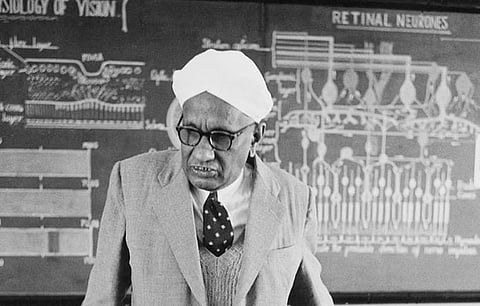

November 7 marks the birth anniversary of Sir Chandrasekhara Venkata Raman, one of India’s most celebrated physicists and a pioneer who reshaped the nation’s scientific and educational landscape.
Born in 1888 in Tiruchirapalli, Tamil Nadu, Raman’s insatiable curiosity about light and sound led him to one of the most important discoveries in modern physics, the Raman Effect.
His work on the scattering of light earned him the Nobel Prize in Physics in 1930, making him the first Asian to receive the honour in the sciences.
But Raman’s influence extended far beyond the laboratory. He was deeply committed to building a culture of scientific inquiry in India’s education system.
As a professor at the University of Calcutta and later as the first Indian Director of the Indian Institute of Science (IISc), Bengaluru, Raman championed hands-on learning, critical thinking, and research-led teaching ideas that were revolutionary for Indian classrooms at the time.
He strongly believed that science should not be confined to textbooks but should inspire students to ask questions, experiment, and observe.
His teaching style encouraged generations of young Indians to see science as a way of understanding the world, not merely as a subject to study.
In 1948, he established the Raman Research Institute in Bengaluru, envisioning a space for independent Indian scientists to explore pure research.
Today, the institute stands as a testament to his lifelong belief in nurturing curiosity-driven education.
Raman’s contributions laid the foundation for India’s post-independence scientific growth, influencing institutions like IITs, IISc, and national research laboratories that continue to shape the country’s technological and academic progress.
As India continues to invest in STEM education and innovation, Raman’s words remain a guiding light for educators and learners alike:
“The essence of science is independent thinking, hard work, and not equipment or money.”
